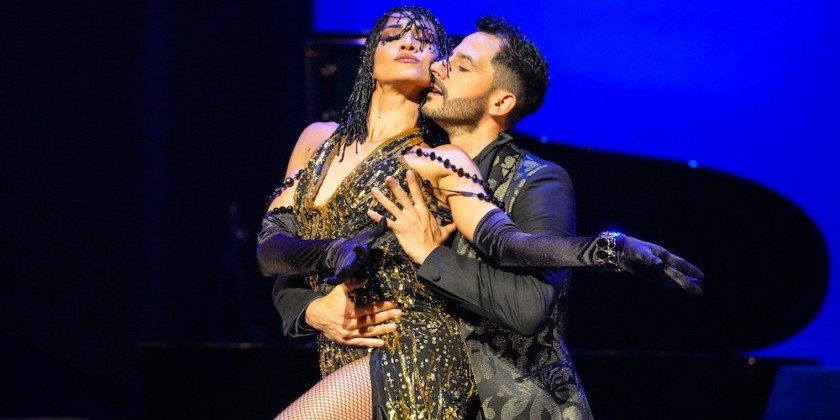AUDIENCE REVIEW: "YAG - The Movie" by Ohad Naharin

Company:
Batsheva Dance Company
Performance Date:
11/21/2020
Freeform Review:
Dance Review: Batsheva Dance Company “YAG - The Movie” by Ohad Naharin
Review by Alec Shiman
On Nov 21, 2020, Batsheva Dance Company released the international premiere of their latest work “YAG - The Movie” by director and choreographer Ohad Naharin. This one-time screening was the company’s first piece designed specifically for the camera with the assistance of cinematographer, Roee Shalti. The cast consisted of six dancers of the main company: Yael Ben Ezer, Sean Howe, Londiwe Khoza, Igor Ptashencuk, Yoni (Yonatan) Simon, and Hani Sirkis. This production was released to the public at 9:00 pm EST for North America, along with 9:00 pm TLV (UTC+2), for Europe and Israel; and 9:00 pm AEDT, for Australia and Asia. The ticket cost 50 Shekels ($14.97). This production was the third rendition of YAG, first choreographed for the stage in 1996, then 2016, undergoing a vast transformation. This fascinating abstractionist work was the second piece I have viewed of Naharin’s since Echad Mi Yodea by the Batsheva Youth Ensemble, published on YouTube on April 19, 2016.
YAG portrayed the individual stories of a disharmonious family struggle to find unity and comprehension. Through the death of family members, the bond that connects the three generations was their shared passion for dance. Each family member takes a moment to pronounce who they are, their familial relationship with others onstage, and whether or not they are dead. Each spoken phrase ends with the line “Loved, Really Loved, Really Really Loved To Dance”.
The movements had soft, expressive, and expansive gesturing that formed the illusion that the dancers were in complete control over their bodies even when moving in a frenzied state. The dancer's shift from moments of vibration or hyperactivity to slow synchronicity showcased their abilities. This film uniquely demonstrates the individual freedom that is seen throughout the Gaga technique. This technique was created by Ohad Narahin himself. As he states in an interview with Dance Consortium in 2012, Gaga is a dance language that utilizes delicate, small gestures which allows “the dancers a sense that they can go beyond familiar limits.”
At one point, as the dancers walked, stomped, and galloped across the stage, they would leave behind one dancer to express themselves and their stories through movement. Whether it was the playful swing and more acrobatic nature of the youth or the frantic confined motion within the elderly, each one of them was unique. Yonatan Simon, the grandpa, was one who drew my eye due to his distinct movement quality and commitment onstage. His strong stage presence always seemed to catch my attention.
Some of the more striking moments occurred through creative uses of costuming and props within this visual feast. For example, when the mother puts the father's clothing over a red door or when one of the granddaughters lays down and eats fortune cookies in a light childlike nature. I found the latter comedic within the world of the piece.
The music, by John Zorn, Gaetano Donizetti, John Traverner, Ennio Morricone, and Ran Slavin, included a wide array of music from industrial sounds, opera, Indian strings and drums, and ethereal woodsy music. The director of sound, David Bell, masterfully arranged the audio to create a sense of atmosphere and tension within the piece.
At one point, the three adults (Grandpa, mother, father) walked across a row of fortune cookies. The physical crunching was accentuated by audio crunching in increasing volume. Londiwe, one of the grandchildren, had to scream just to be heard. When the crunching ceased and transitioned to soft rain noises, the dancers and the audience got to breathe. This moment, along with other moments of tension and release made me invested and enthralled within the piece. Though I didn’t comprehend all the symbolism, such as the use of nudity, the work got me excited to view more of their pieces and see what Batsheva has for us in the future.
For those who are interested, Gaga classes and workshops, taught by an array of dancers, including from Batsheva Dance Company are available on Gagapeople.com.












